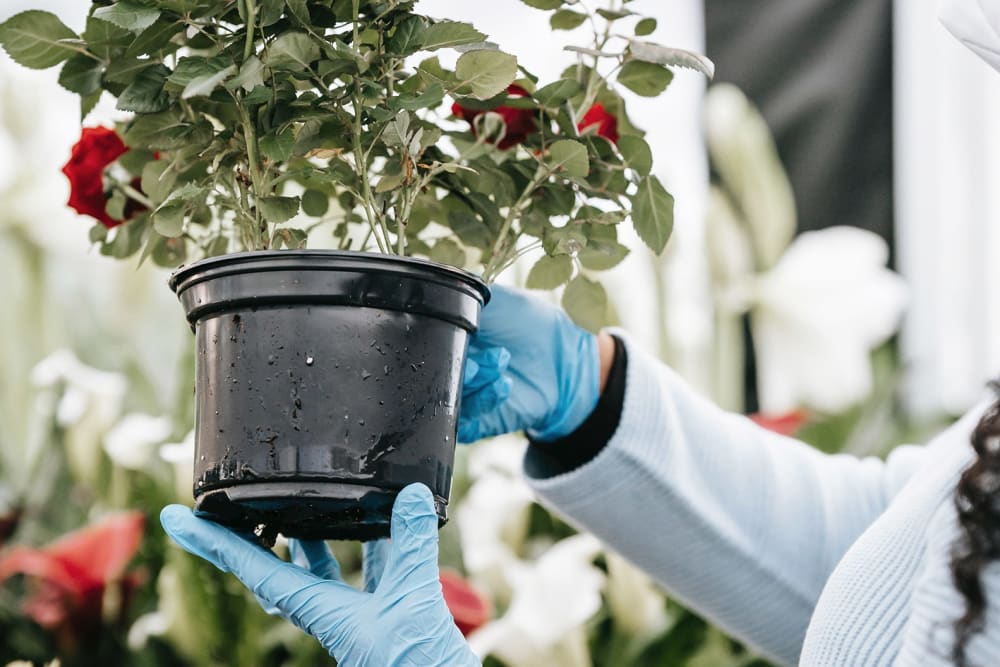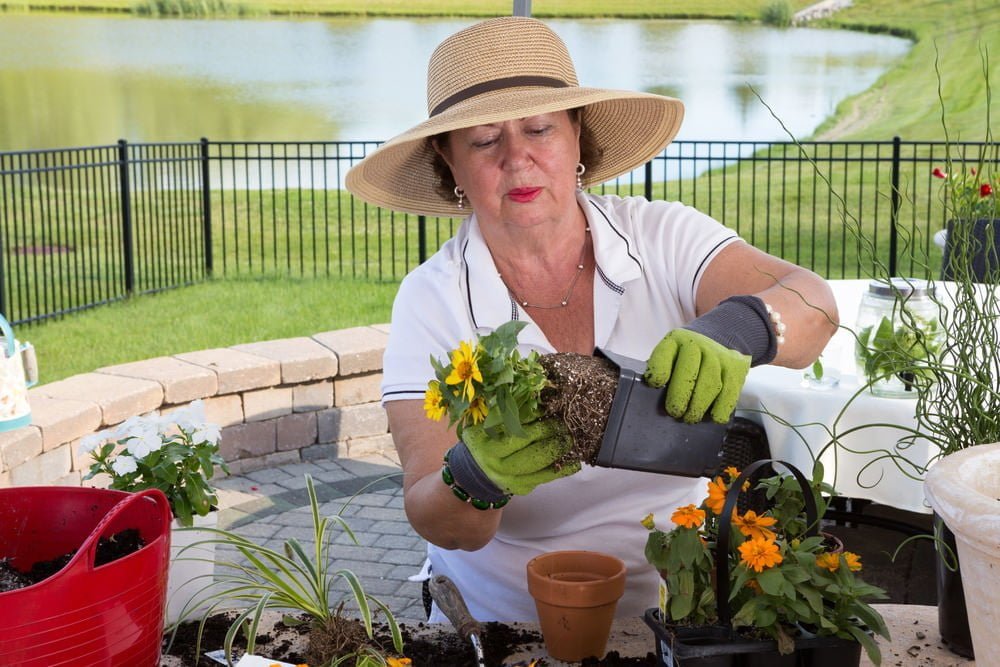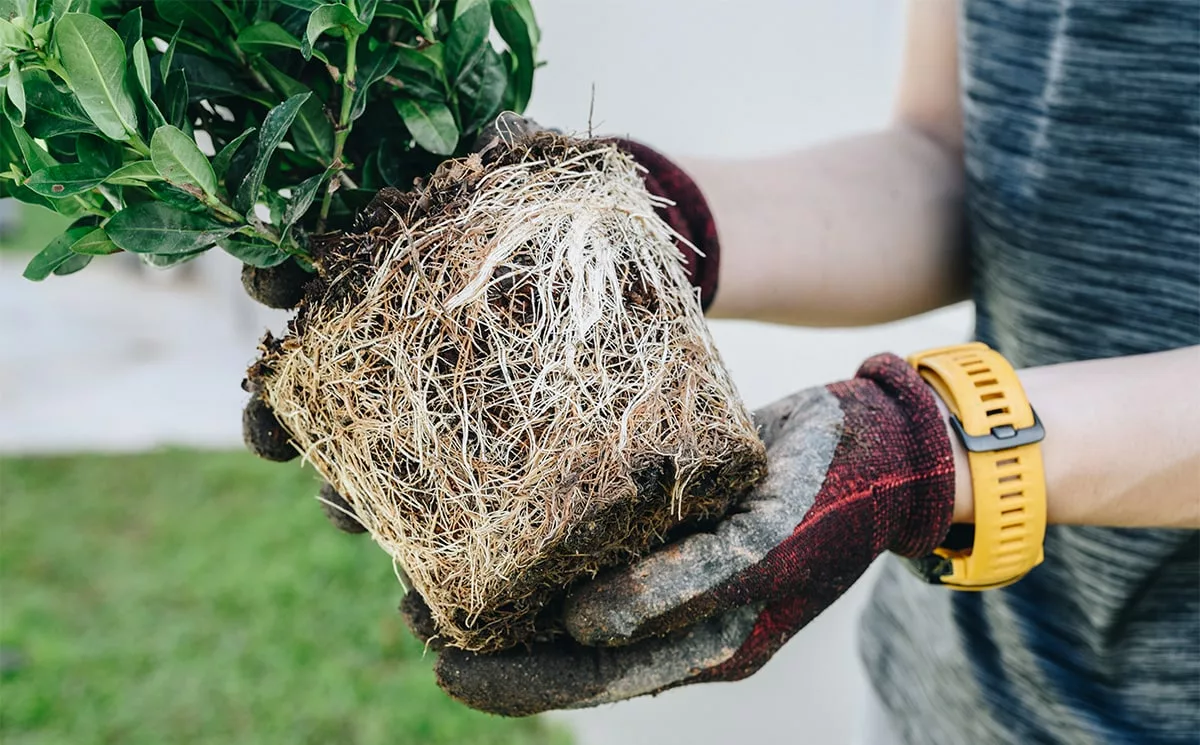As an Amazon Associate, I earn from qualifying purchases.
The best time to repot outdoor plants is in early spring or fall. This ensures minimal stress and optimal growth.
Repotting outdoor plants is crucial for their health and growth. Early spring and fall provide the best conditions. During these periods, temperatures are mild, and plants are not in their peak growing phases. This minimizes stress and allows roots to establish better in the new soil.
Choosing the right time ensures plants have the best chance to thrive. Proper repotting also prevents root bound issues, encourages healthier growth, and improves overall plant vitality. Always use fresh, nutrient-rich soil and ensure the new pot has adequate drainage. This simple step can make a significant difference in the long-term health of your outdoor plants.
Introduction To Repotting
Repotting is an essential task for plant lovers. It helps plants grow better. Knowing when to repot is important. Let’s explore why repotting matters and how to spot the signs.
Importance Of Repotting
Repotting gives plants more room to grow. It refreshes the soil with new nutrients. This keeps the plant healthy and strong. A bigger pot allows for more root space. This helps the plant absorb water and nutrients better.
Signs Your Plant Needs Repotting
- Roots are visible: If roots are growing out of the pot, it’s time to repot.
- Slow growth: If the plant isn’t growing, it may need a bigger pot.
- Yellow leaves: Yellowing leaves can mean the plant is root-bound.
- Soil dries quickly: If the soil dries fast, the plant may need more space.

Credit: www.patchplants.com
Seasonal Considerations
Repotting outdoor plants at the right time is crucial. Different seasons offer unique advantages and challenges. Understanding these can help ensure your plants thrive. Let’s explore the best times to repot outdoor plants.
Spring Repotting
Spring is often the best time to repot. The weather is mild, and plants are entering their growth phase. This season encourages root development and helps plants adjust quickly.
- Ideal Temperature: Mild and consistent.
- Growth Phase: Beginning of active growth.
- Benefit: Roots establish faster.
Summer Repotting
Summer can be challenging for repotting. The heat can stress plants. If needed, choose early morning or late evening.
- Ideal Temperature: Cooler parts of the day.
- Growth Phase: Active growth but high stress.
- Precaution: Avoid midday repotting.
Fall Repotting
Fall is another good time for repotting. The weather cools down, and plants prepare for dormancy. This helps them settle in before winter.
- Ideal Temperature: Cool and stable.
- Growth Phase: Slowing down.
- Benefit: Roots adjust before winter.
Winter Precautions
Winter is the least ideal time for repotting. Plants are dormant, and cold weather can harm roots. If necessary, keep the plant indoors until spring.
- Ideal Temperature: Avoid freezing conditions.
- Growth Phase: Dormant.
- Precaution: Minimal root disturbance.
Choosing The Right Pot
Repotting outdoor plants can be an exciting task. To ensure your plants thrive, choosing the right pot is crucial. The right pot provides enough room for growth and proper drainage. This section will guide you through selecting the perfect pot for your outdoor plants.
Size Matters
The size of the pot plays a significant role in plant health. A pot that is too small can restrict root growth and lead to poor plant health. A pot that is too large can retain too much water, causing root rot.
Consider the current size of your plant’s root ball. Choose a pot that is 2-3 inches larger in diameter than the root ball. This gives the roots space to grow without being overwhelmed.
| Plant Size | Recommended Pot Size |
|---|---|
| Small Plants | 4-6 inches in diameter |
| Medium Plants | 8-10 inches in diameter |
| Large Plants | 12+ inches in diameter |
Material Choices
The material of the pot affects its functionality and aesthetics. Common materials include plastic, ceramic, terracotta, and metal. Each has its pros and cons.
- Plastic Pots: Lightweight and affordable, but can heat up quickly.
- Ceramic Pots: Attractive and stable, but often heavy and can crack.
- Terracotta Pots: Porous and good for drainage, but prone to breaking.
- Metal Pots: Durable and modern-looking, but can rust and heat up.
Plastic pots are great for larger plants due to their light weight. Ceramic pots add a touch of elegance but need careful handling. Terracotta pots offer excellent drainage but require more care to avoid breaking. Metal pots provide a sleek look but need to be monitored for rust.
By choosing the right size and material, you can give your outdoor plants the best chance to thrive. This ensures they grow healthy and strong throughout the seasons.

Credit: millcreekgardens.com
Preparing For Repotting
Repotting outdoor plants ensures their health and growth. Proper preparation is crucial for success. This guide covers essential steps to make your repotting process smooth and effective.
Gathering Supplies
Before starting, gather all necessary supplies. A few key items will make your task easier:
- New pots: Choose pots with drainage holes. This helps prevent root rot.
- Quality soil: Select soil that suits your plant type. Good soil promotes healthy roots.
- Watering can: Use a can with a fine nozzle. This ensures gentle watering.
- Garden tools: A trowel and gloves are essential. They make handling plants easier.
Soil Preparation
Preparing the soil is a vital step. Healthy soil means healthy plants. Follow these steps for the best results:
- Choose the right soil: Different plants need different soils. Research your plant’s needs.
- Mix in compost: Compost adds nutrients to the soil. This boosts plant growth.
- Ensure proper drainage: Add perlite or sand to improve drainage. This prevents waterlogging.
- Check pH levels: Use a pH tester to ensure the soil is balanced. Most plants prefer slightly acidic soil.
Proper soil preparation ensures your plants thrive in their new pots. This step is crucial for their long-term health.
Step-by-step Repotting Guide
Repotting your outdoor plants at the right time is vital. It ensures they continue to grow healthy and strong. Here is a simple step-by-step guide to help you repot your plants effectively.
Removing The Plant
First, carefully remove the plant from its current pot. Use a small shovel or your hands. Hold the plant by its base, close to the soil. Gently pull the plant out, ensuring not to damage the roots. If the plant is stuck, tap the pot’s sides to loosen the soil. Once removed, shake off excess soil from the roots.
Root Inspection
Next, inspect the roots thoroughly. Look for any signs of disease or rot. Healthy roots should be white or light brown. Trim any black or mushy roots using clean scissors. This step helps the plant focus its energy on growing new, healthy roots. If the roots are too dense, gently untangle them. This promotes better growth in the new pot.
Placing In New Pot
Choose a new pot that is slightly larger than the old one. Ensure the pot has drainage holes. Fill the bottom with a layer of fresh potting soil. Place the plant in the center of the pot. Add more soil around the roots, filling up to the base of the plant. Press the soil gently to remove air pockets. Water the plant thoroughly to help it settle.
Post-repotting Care
Repotting outdoor plants is crucial for their growth and health. After repotting, plants need special attention to thrive. Proper care ensures they adjust well in their new pots. This section covers watering tips, sunlight requirements, and fertilizing to help your plants flourish.
Watering Tips
Watering is essential after repotting. Ensure the soil is moist but not soggy. Overwatering can cause root rot. Use a watering can with a fine rose head. This helps distribute water evenly. Check the soil moisture regularly. Stick your finger an inch into the soil. If it feels dry, it’s time to water. Remember to water in the morning. This gives plants time to absorb moisture before the sun is hot.
Sunlight Requirements
Proper sunlight is vital for post-repotting recovery. Place your plants in a spot with bright, indirect light. Direct sunlight can scorch the tender roots. Gradually introduce them to more sunlight. Move the plants to a sunny spot for a few hours daily. Increase the duration each day. This helps them adapt without stress. Monitor their response to sunlight. If leaves turn yellow, reduce sun exposure.
Fertilizing
Fertilizing provides essential nutrients for growth. Avoid fertilizing immediately after repotting. Wait for at least two weeks. This gives plants time to settle. Use a balanced, water-soluble fertilizer. Follow the recommended dosage on the package. Over-fertilizing can harm the plants. Apply fertilizer during the growing season. Spring and summer are ideal for fertilizing. Ensure the soil is moist before applying fertilizer. This prevents root burn and ensures nutrient absorption.
Common Mistakes To Avoid
Repotting outdoor plants can be tricky. Avoiding common mistakes ensures your plants thrive. Below are key mistakes to watch out for.
Overwatering
Overwatering is a common mistake. Plants need water, but not too much. Overwatering can cause root rot. Always check the soil before watering. If the soil is wet, wait to water again.
Use a moisture meter if unsure. A moisture meter helps keep track of soil moisture levels. This tool can save your plants from too much water.
Improper Soil Use
Using the wrong soil can harm plants. Always choose the right soil for your plant type. Some plants need sandy soil, others need rich, loamy soil.
Check the plant’s needs. Match the soil to those needs. This helps the plant grow strong and healthy.
Wrong Pot Size
Choosing the wrong pot size is another mistake. A pot too small can stunt plant growth. A pot too large can lead to overwatering issues.
| Pot Size | Effect on Plant |
|---|---|
| Too Small | Roots get cramped. Growth is stunted. |
| Too Large | Soil stays too wet. Roots may rot. |
Always choose a pot that is just right. Typically, a pot 1-2 inches larger in diameter than the current one works best.
Expert Tips
Repotting outdoor plants at the right time ensures their healthy growth. Experts recommend specific times and methods to make this task easier. Follow these tips for successful repotting.
Timing Recommendations
Timing is crucial for repotting outdoor plants. The best time is usually during the plant’s dormant season. For most plants, this means early spring or late fall. During these times, plants are less stressed and can recover faster.
In early spring, plants prepare for new growth. They have stored energy and can handle repotting well. In late fall, plants slow down and enter dormancy. This makes it easier for them to adapt to a new pot.
Avoid repotting during hot summer months. High temperatures can stress plants and hinder their recovery. Similarly, avoid repotting during blooming periods. Plants need energy to produce flowers and may struggle with repotting.
Plant-specific Advice
Different plants have unique needs. Here’s a quick guide for some common outdoor plants:
| Plant Type | Best Time to Repot | Special Tips |
|---|---|---|
| Perennials | Early Spring | Repot before new growth starts. |
| Succulents | Early Spring or Early Fall | Use well-draining soil. |
| Shrubs | Late Fall | Prune roots before repotting. |
| Herbs | Early Spring | Repot when they outgrow their pots. |
For perennials, repot in early spring. This timing allows them to start fresh with new growth. Ensure they have enough space for roots to expand.
Succulents prefer early spring or early fall. These seasons provide mild temperatures that help them adjust. Always use well-draining soil to prevent root rot.
Repot shrubs in late fall. This gives them time to settle before winter. Prune any damaged roots before placing them in a new pot.
Herbs should be repotted in early spring. This helps them grow stronger during the growing season. Repot when they outgrow their current pots.
Each plant has its own needs. Ensure you understand them for successful repotting.
:max_bytes(150000):strip_icc()/GettyImages-2083709701-d5f50eb0c6e54114aa9043372e0c87ad.jpg)
Credit: www.southernliving.com
Frequently Asked Questions
When Should I Repot Outdoor Plants?
The best time to repot outdoor plants is during spring or early fall. These seasons offer mild temperatures. This helps the plants to recover and establish better in their new pots.
How Do I Know If My Plant Needs Repotting?
Check if roots are growing out of the drainage holes. Also, if the plant looks top-heavy or growth has slowed, it may need repotting.
What Soil Should I Use For Repotting?
Use high-quality potting soil for repotting outdoor plants. Ensure the soil provides good drainage and aeration to promote healthy root growth.
Can I Repot Outdoor Plants In Winter?
It’s not advisable to repot outdoor plants in winter. Cold temperatures can stress the plants and hinder their recovery and growth.
Conclusion
The best time to repot outdoor plants is during early spring or fall. These seasons offer ideal conditions for growth. Repotting helps plants thrive by providing fresh nutrients and space. Remember to water them well after repotting. By following these tips, your outdoor plants will flourish beautifully.

